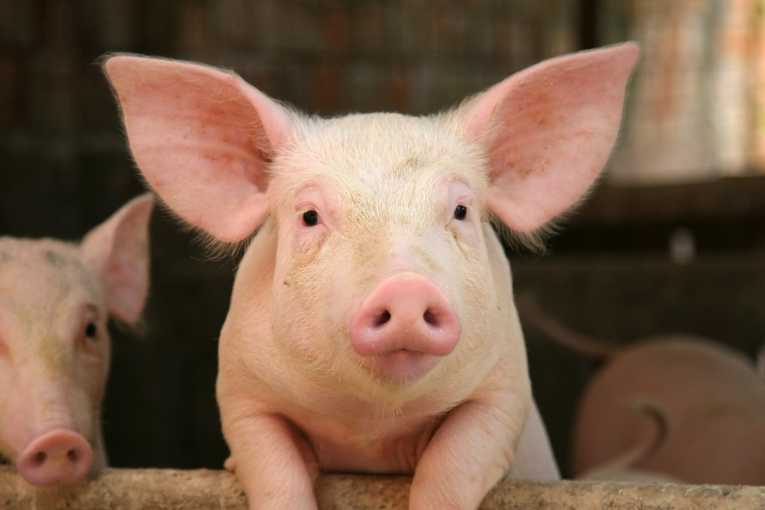Pig breeding is big business, but in order to make money the producer must have a large number of pigs.
One of the problems is that a large number of pigs produces a large amount of waste.
This is the situation faced in the US states of North and South Carolina. During the past fifteen years, while the number of pig producers has steadily declined, the number of pigs has multiplied as small farms have been bought up and amalgamated into massive production operations.
The increase has been so great that in North Carolina alone pig production now accounts for a quarter of the state's gross farm receipts. With so many large-scale pig farms the problem of proper animal waste disposal is now a real issue.
Traditionally the usual practice in the Carolinas has been to store pig faeces and urine in large open air lagoons, which were basically big holding ponds. The waste was later spayed onto arable land as organic fertiliser, but in a situation where the farming is now based on pigs, more pigs and virtually nothing else, disposing of this waste becomes a big problem.
This old system was not without its difficulties. From time to time the lagoons ruptured after heavy rains, as happened with Hurricane Floyd in 1999. Waste that was sprayed onto fields would often polluted streams and rivers.
The environmental disaster of 1995 is still fresh in the memory of many North Carolinians. A lagoon overflow caused more than 20 million gallons of pig waste to get dumped into the New River in Onslow County, contaminating the drinking water and causing massive fish losses.
These open lagoons also cause air pollution, with ammonia, nitrogen and methane gases freely leaking into the atmosphere and foul odours from manure pit gasses wafting over to neighbouring communities.
Excessive amounts of nitrogen can lead to acid rain and a team of scientists from the US Agricultural Research Service and the US Department of the Environment has recently examined a series of commercial anaerobic swine wastewater lagoons in North and South Carolina for genes involved in the process of turning ammonia into nitrogen.
Eight lagoons were examined and measurements were taken to assess the abundance of four nitrogen cycling genes. The researchers concluded that denitrifying and nitrifying organisms were not active. They concluded that acidification and eutrophication of the surrounding ecosystem was most likely the result of prolonged exposure to volatilised ammonia.
Thomas Ducy, one of the authors of the report commented that there is a mission to effectively and safely manage and use manure and other agricultural by-products in ways to maximise their potential benefits. The study concluded that these anaerobic lagoons have relatively consistent levels of nitrogen-cycling genes and are similar to natural ecosystems. In fact the level was not as high as some wastewater treatment systems.
The programme of research to help the agricultural and scientific communities to increase their understanding of the microbial ecology and nutrient cycling process in anaerobic lagoons is continuing.










